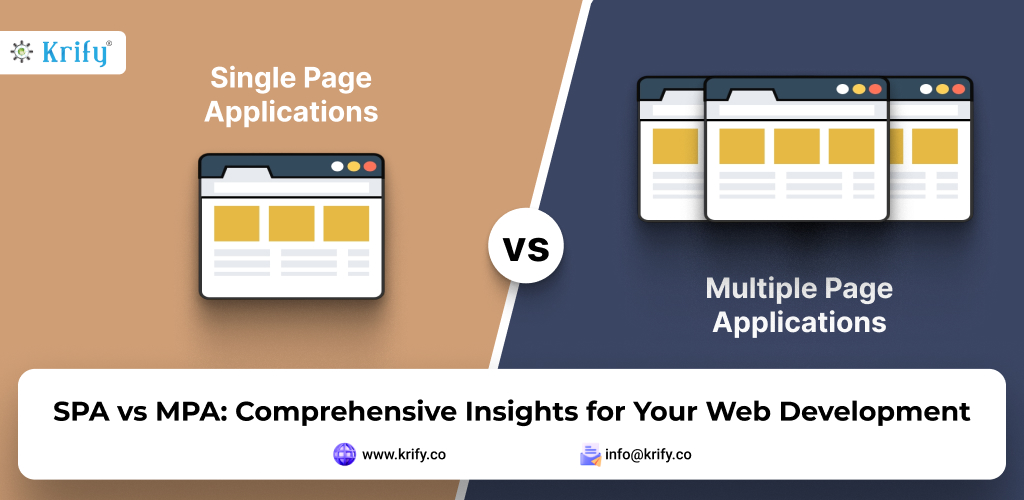Showdown: SPAs vs MPAs – Choosing Your Web Dev Champion!
We’re currently moving into a time completely dominated by artificial intelligence-driven technologies, and developing digital platforms is a key strategy through which you can keep in touch with users. As technology firms grow ever larger across the globe, whether they be established companies or young startups, they are constantly bringing in web development firms to help them ahead even further.On But in this ever-changing environment for Web Development, those who want to improve user experience and performance must also understand the differences between Single Page Applications (SPAs) and Multi-Page Applications (MPAs).
The SPA: A Speed Demon with App-like Finesse
As on SPAs load content dynamically without refreshing the entire page, making the user experience seamless. Companies often liken it to a dispute because at present there’s only moral right-and-wrong (more bargaining conditions) in modern business-speak for websites and mobile apps. (This features prominently in all top web and mobile app development companies from Krify alone).
Pros:
Blazing Speed: Say goodbye to clunky reloads! SPAs keep users engaged with instant content updates.
App-tastic Feel: Provide a modern, interactive experience that rivals native mobile apps.
Development Efficiency: Build reusable UI components and streamline your coding process.
Cons:
Initial Load Hurdle: SPAs can take a bit longer to load initially due to the JavaScript muscle they flex.
SEO Challenges: Search engines might struggle to index dynamic content, impacting your website’s visibility.
JavaScript Jedi Required: Building SPAs requires a strong understanding of JavaScript frameworks.
The MPA: A Classic Web Development Warrior, Reforged
The living fossils of web development are MPAs. These are still just like old-style websites: each page is an independent HTML file. Though it requires full page reloads for navigation, MPAs are still structured how developers have grown accustomed to it thanks to its SEO-friendly disposition.
Pros:
- SEO Champion: Search engines love the well-defined structure of MPAs, boosting your organic reach.
- Development Simplicity: Building MPAs often requires less complex coding compared to SPAs.
- Content Conqueror: Easily add new pages as your website grows without affecting existing content.
Cons:
- Less Engaging Navigation: Frequent page reloads can disrupt the user experience and feel less fluid.
- Potential for Repetition: Building and maintaining multiple pages can be time-consuming.
- Limited Interactivity: MPAs might struggle to achieve the same level of real-time interaction as SPAs.
The Ultimate Showdown: Picking Your Web Development Champion
So, who wins the crown? The reality is that there are no winners here. The right choice will depend on the specific requirements of your project.
- Embrace the SPA for: Highly interactive applications, social media platforms, real-time data-driven experiences.
- Unleash the MPA for: Content-heavy websites, e-commerce platforms, SEO-critical landing pages.
Again, you are not restricted to a single option! Hybrid applications combining SPAs and MPAs can offer developers a strong user experience together well.
Conclusion:
At Krify, we specialize in both Single Page Applications and Multi-Page Applications, ensuring we deliver solutions tailored to your unique needs. Whether you seek the fast, seamless experience of an SPA or the structured, SEO-friendly approach of an MPA, we can help you achieve your goals. Partner with us to navigate the evolving web development landscape and elevate your user experience. Contact us today to start your journey to digital excellence.



